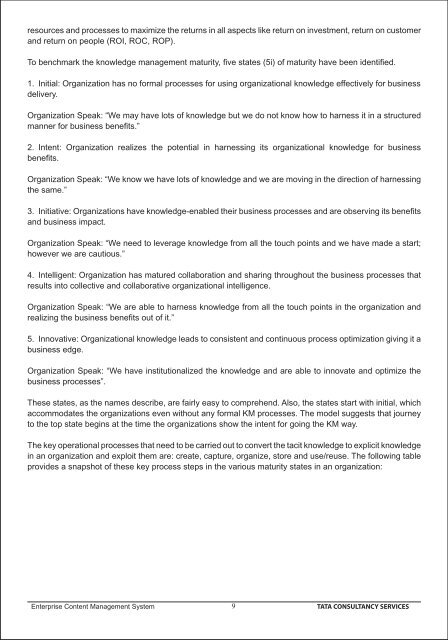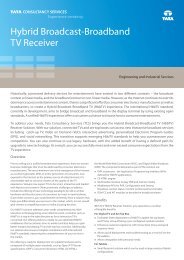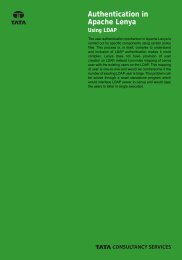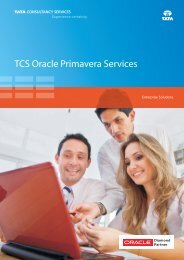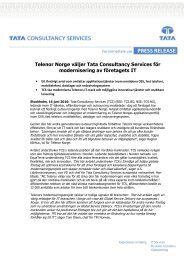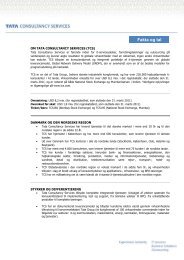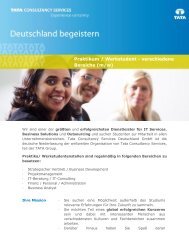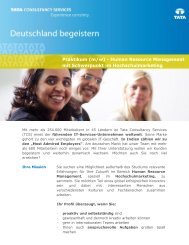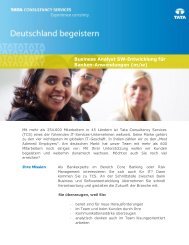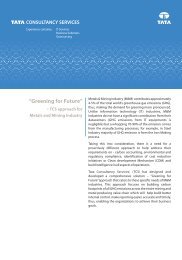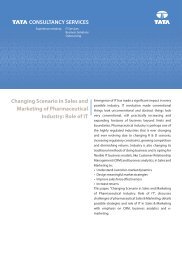Knowledge Management using Enterprise Content Management ...
Knowledge Management using Enterprise Content Management ...
Knowledge Management using Enterprise Content Management ...
Create successful ePaper yourself
Turn your PDF publications into a flip-book with our unique Google optimized e-Paper software.
esources and processes to maximize the returns in all aspects like return on investment, return on customer<br />
and return on people (ROI, ROC, ROP).<br />
To benchmark the knowledge management maturity, fi ve states (5i) of maturity have been identifi ed.<br />
1. Initial: Organization has no formal processes for <strong>using</strong> organizational knowledge effectively for business<br />
delivery.<br />
Organization Speak: “We may have lots of knowledge but we do not know how to harness it in a structured<br />
manner for business benefi ts.”<br />
2. Intent: Organization realizes the potential in harnessing its organizational knowledge for business<br />
benefi ts.<br />
Organization Speak: “We know we have lots of knowledge and we are moving in the direction of harnessing<br />
the same.”<br />
3. Initiative: Organizations have knowledge-enabled their business processes and are observing its benefi ts<br />
and business impact.<br />
Organization Speak: “We need to leverage knowledge from all the touch points and we have made a start;<br />
however we are cautious.”<br />
4. Intelligent: Organization has matured collaboration and sharing throughout the business processes that<br />
results into collective and collaborative organizational intelligence.<br />
Organization Speak: “We are able to harness knowledge from all the touch points in the organization and<br />
realizing the business benefi ts out of it.”<br />
5. Innovative: Organizational knowledge leads to consistent and continuous process optimization giving it a<br />
business edge.<br />
Organization Speak: “We have institutionalized the knowledge and are able to innovate and optimize the<br />
business processes”.<br />
These states, as the names describe, are fairly easy to comprehend. Also, the states start with initial, which<br />
accommodates the organizations even without any formal KM processes. The model suggests that journey<br />
to the top state begins at the time the organizations show the intent for going the KM way.<br />
The key operational processes that need to be carried out to convert the tacit knowledge to explicit knowledge<br />
in an organization and exploit them are: create, capture, organize, store and use/reuse. The following table<br />
provides a snapshot of these key process steps in the various maturity states in an organization:<br />
<strong>Enterprise</strong> <strong>Content</strong> <strong>Management</strong> System 9<br />
TATA CONSULTANCY SERVICES


